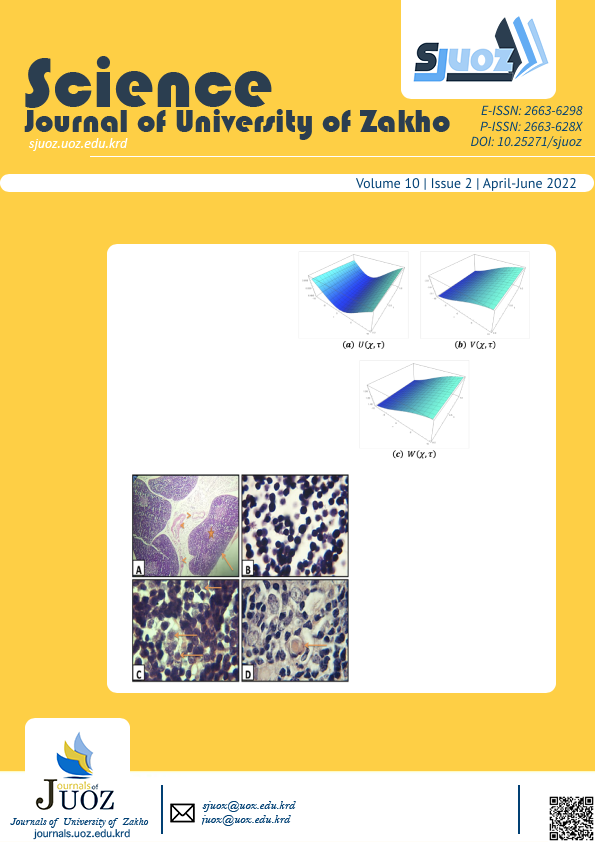Histopathological Effects of Phytoestrogrn (Genistein) on Thymus Gland of Adult and Post-Natal Female Albino Mice
Abstract
This study aimed to evaluate how genistein affected the weight and histological structure of the thymus gland in adult and postnatal (P22) female albino mice. Fifteen adult female albino mice and fifteen postnatal (P22) female albino mice were used and divided between two experiments. The animals were divided into three groups (n=5) in each experiment: Group (I), the control group, Group (II), and Group (III), which received 10mg and 50mg genistein/ kg B. W. respectively. In comparison to the control, treatment with 50mg genistein resulted in a significant increase in the weight of the thymus gland in both adult and postnatal mice. When compared to control, treatment with 10mg genistein resulted in a significant increase in this weight in adult females and a significant decrease in the weight of this gland in postnatal mice. Both genistein concentrations had a negative impact on the gland’s histological features. The formation of a "Starry sky" in cortical and medullary regions, an increase in the thickness of regions due to an increase or decrease in the number of T cells depending on genistein concentration, as well as histiocyte hyperplasia and blood vessel congestion, are among these consequences. In conclusion, because genistein affects thymic tissue negatively, it has the potential to create thymic and immunological diseases.
Full text article
Authors
Copyright (c) 2022 Zozan Abdullah Ibrahim, Intissar Numman Waheed

This work is licensed under a Creative Commons Attribution 4.0 International License.
Authors who publish with this journal agree to the following terms:
- Authors retain copyright and grant the journal right of first publication with the work simultaneously licensed under a Creative Commons Attribution License [CC BY-NC-SA 4.0] that allows others to share the work with an acknowledgment of the work's authorship and initial publication in this journal.
- Authors are able to enter into separate, additional contractual arrangements for the non-exclusive distribution of the journal's published version of the work, with an acknowledgment of its initial publication in this journal.
- Authors are permitted and encouraged to post their work online.
